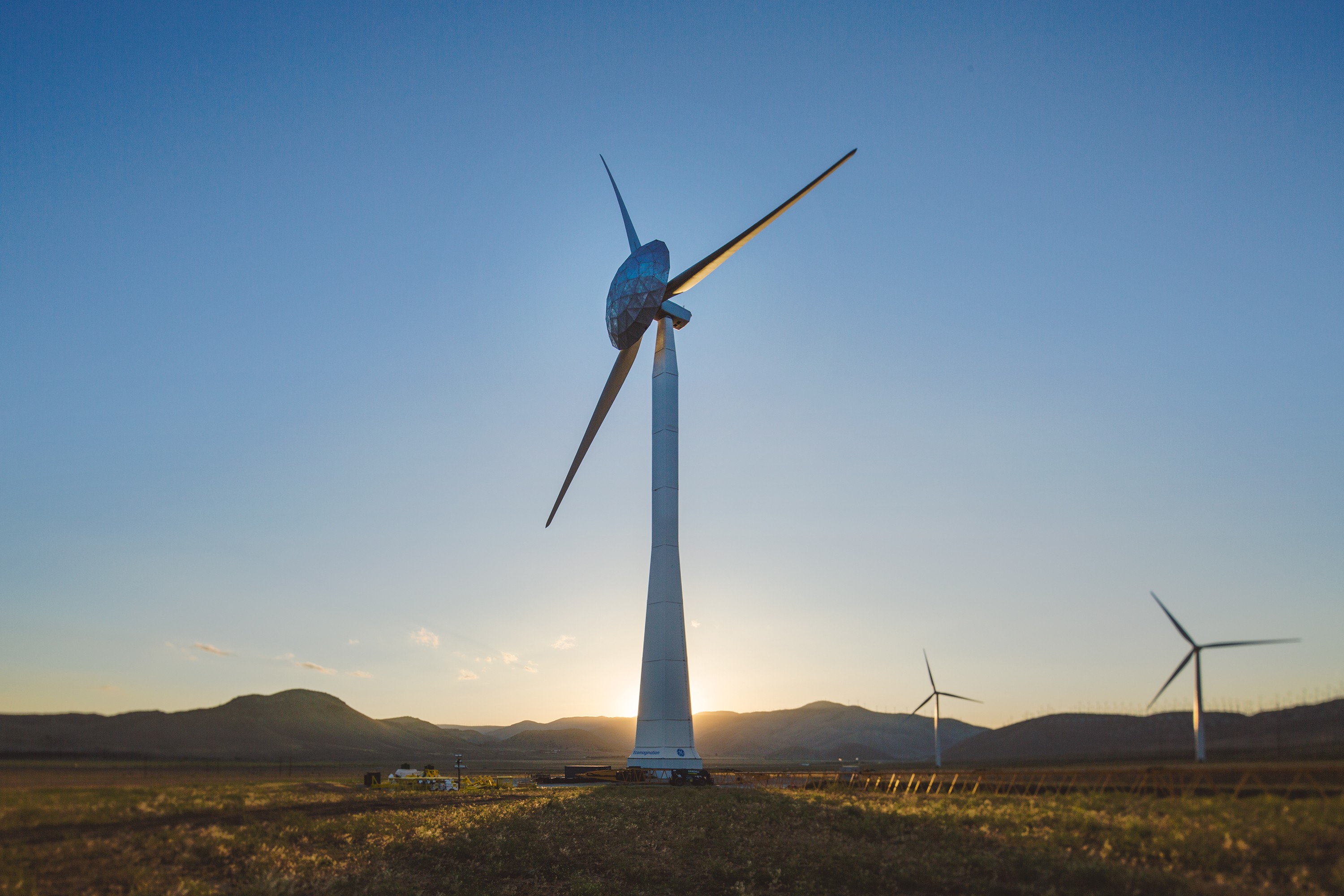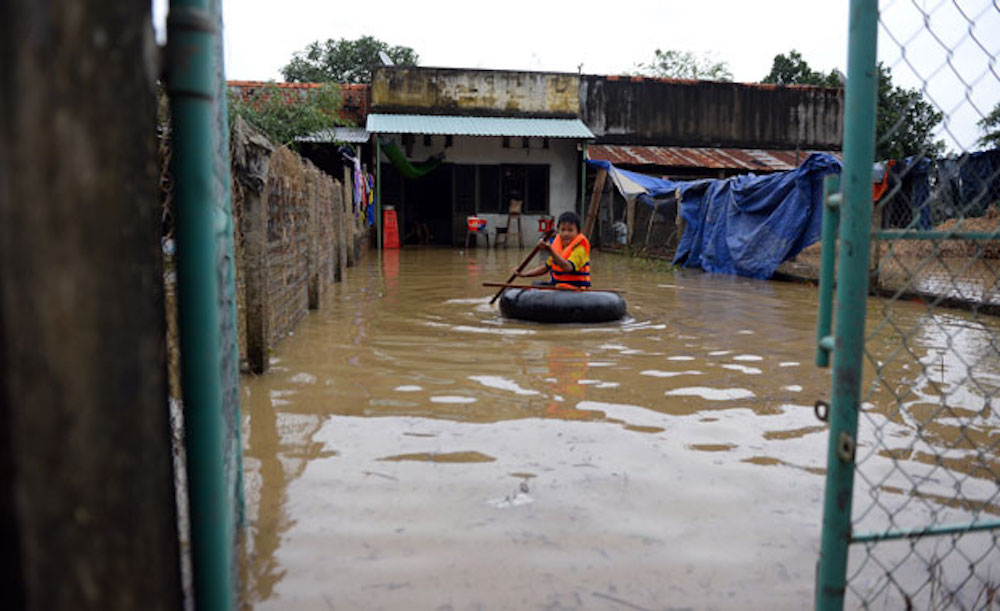Although Vietnam has great potential for renewable energy, and the government has put forward many plans advocating it, actual policies to secure investment and develop the sector have been slow to evolve. “Development [of renewables] has not grown strongly because power prices are too low to accommodate it,” says Le Tuan Phong, the Vice Director of Energy Department, Ministry of Industry and Trade (MOIT): “Renewable energy investment actually shows a documented decline.”
Wind power in particular struggles to gain a foothold. According to MOIT, there are about 50 registered wind projects, yet only 10% have been implemented, and only 4 plants are operational. Three of these are in Binh Thuan: Tuy Phong-30MW; Phu Quy-6MW and Phu Lac-20MW. The largest is in Bac Lieu with a capacity of 99MW.
Currently, Vietnam has four wind power stations play the national grid. Source: devi-renewable.com.
Waiting for a better price
This lackluster growth is attributable to conflicts between the government and investors on appropriate pricing. For example, the State has so far only offered to pay 7.8 US cent/1kWh to wind power providers. The German Agency of International Cooperation (GIZ) states that 9.8 US cent/kWh for mainland generation and 11.2 US cent/kWh for off-shore projects is about as low as is commercially viable.
The Bac Lieu wind farm was first proposed in 2013 under the 7.8 US cent/1kWh (2012) tariff structure. However, in 2014 the government approved a special price 9.8 US cent/kWh due to the higher costs of offshore construction. This did not appease investors, who were seeking agreement on a price of 11.8 US cent/kWh. Bac Lieu People’s Committee see this price gap as the major barrier to implementation. “Without state support, the investment costs to generate a single MW of wind energy are too high. Wind is just not competitive with other types of energy,” says Nguyen Tan Khuong, Head of Bac Lieu People’s Committee.
Only the Bac Lieu wind farm receives a price of 9.8 US cent/kWh for its power. Three other wind plants, Tuy Phong, Phu Quy and Phu Lac), sell power for just 7.8 US cent/kWh. “The 9.8 US cent/kWh price is not officially documented”, said Dr. Nguyen Quoc Khanh: “It is a very specific benefit for a specific project, so unclear if it can be applied for another project?”
The loose arrangement surrounding the higher tariff illustrates a lack of transparency and accountability in the pricing mechanisms for wind power. It is not good for the state, according to Phan Duy Tuyen, the Chairman of Bac Lieu Union of Science and Technology Association. “When such ad-hoc pricing exists, the government cannot attract investors to help bring the country much-needed renewable energy,” said Phan.
The Department of Industry and Trade – an office under the control of each province’s authority – of three key provinces, Binh Thuan, Ninh Thuan and Bac Lieu, all report that they are having a hard time enticing investors for wind power generation. “Bac Lieu used to have wind energy investors visit from India and South Korea… but they come once and don’t come back” said Tran Danh Tuyen, the Vice Director of Bac Lieu Department of Industry and Trade.
“The core problem is that the state should provide an attractive price mechanism”, said Dr. Nguyen Quoc Khanh. “This is the major issue routinely discussed with government officers of MOIT and other related governmental agencies at many conferences, and most investors remain positive that the needed financial assistance will be forthcoming.”
Absent some resolution, it will be difficult for Vietnam to achieve its published wind energy targets of 2.5 billion kWh in 2020, 16 billion kWh in 2030 and 53 billion kWh in 2050.
Who will pay?
According to renewable energy expert Nguyen Duc Cuong the first step in overcoming this price barrier is answering the question: “Who will pay a high price – Electricity of Vietnam (EVN) or consumers?”
The state is now grappling with this. On October 11, in the meeting to discuss a mechanism to promote solar and wind power development, the Vice Minister of MOIT Hoang Quoc Vuong acknowledged that the fixed wind and solar prices approved in 2013 are unsuitable as current production costs are higher. He requested the Department of Energy develop and analyze new pricing scenarios and submit them to the Prime Minister later that month along with their recommendation. So far, there’s been no further action.
According to Dr. Nguyen Trinh Hoang Anh from Vietnam-France University, it’s difficult to propose an appropriate price. If it’s too high, new projects will be implemented too quickly and the state will have to pay more subsidies than it desires. Too low a price, he says, will result in very few projects moving forward. The range from 7.8 US cent/kWh to 11.2 US cent/kWh is quite wide, which is why it’s been difficult to come to agreement says Dr. Nguyen: “It [price] should have a connection between the theory and practice as concluded by policy makers, experts, scientists and foreign practitioners. If they’re all engaged, determination of the right price can come quickly, but it is impossible to have it immediately.”
“We are considering establishing a Renewable Energy Development Development Fund. It is expected to be managed by banks, especially for German KfW Development Bank,” said Pham Trong Thuc, Director of Department of Renewable Energy, MOIT: “We hope to have a Renewable Energy law by 2026”

In addition to construction costs of wind power plants, investors worry also build transmission lines connecting the national grid.
In 2011, the government issued Decision No. 37/QD-TTg, establishing the 7.8 US cent/kWh wholesale price for wind power. Electricity of Vietnam would pay 6.8 US cent/kWh and the other 1 US cent/kWh would come from the Vietnam Environment Protection Fund. At that time it was also assumed that 0.8 US cent/kWh would be available through the Clean Development Mechanism (CDM) raising the price up to 8.6 US cent/kWh. But the CDM could no longer be counted on as the international carbon markets it relied on effectively collapsed in 2012, leaving the original 7.8 US cent/kWh as the price wind power investors in Vietnam must accept.
Calculating a more appropriate price for wind is seen as problematic, due to who’s charged with doing the math, says an advisor with Green ID. “This solution can only be sustainable and effective when EVN’s price calculation is transparent,” the advisor said.
However, EVN, Vietnam’s only wholesale purchaser of power, is routinely criticized because it never releases official calculations. Its management capacity is further questions as EVN continuously reports operating losses. Most recently, EVN’s after-tax profit for the first half of 2016 was -717 billion VND (about 31.7 million US dollar) and its parent company lost 930 billion VND (about 41.1 million US dollar). “It is a risk. What will happen if EVN cannot afford to repay investors,” said Dr. Nguyen.
The table compares the difference between the target wind power, solar power and biomass power in 2020 and 2030 of the renewable energy development strategy to 2030 and vision to 2050 (REDS) and calibrated power planning VII (PDP7rev ). Source: Dr. Nguyen Quoc Khanh.
Which numbers to use?
Dr. Nguyen Quoc Khanh points out that there are also competing targets for 2020 and 2030 wind, solar and biomass power generation. Two critical planning documents, the Revised Master Plan VII issued in March, and the Renewable Energy Development Strategy issued in November are at odds with each other.
“What are investors supposed to think?”, asks Dr. Khanh: “This causes misunderstandings about the policies because they have different targets even when both documents are signed by the Prime Minister.”
Furthermore, Vietnam lacks a reliable wind energy map due to the lack of data. World Bank, EVN and other experts have published different numbers over time with no attempt to reconcile them.
In 2001, the World Bank concluded that Vietnam had a wind energy potential of 513,360MW to a height of 65m. This was greater than neighboring countries like Cambodia, Laos and Thailand. In 2007, EVN estimated that Vietnam wind generating capacity to be just 1,785MW. In 2010, MOIT and the World Bank put Vietnam’s capacity at 2,400MW at a height of 80m. Recently, MOIT and GIZ have measured the wind capacity in 10 locations for a height of 80m, but they have yet to release their findings. Dr. Du Van Toan, the Vietnam Institute of Ocean and Island Research estimates that Vietnam’s offshore generating capacity to be 1.3 million MW at a height of 80m and a wind speed averaging 8m/s.
Europe used to support a policy to promote solar energy. As a result, solar energy developed fast between 2010 and 2012. However, this pace over-taxed the subsiding mechanisms and the state budget, causing the policy to be abandoned says Dr. Nguyen Trinh Hoang Anh.

Project Bac Lieu Wind Power Plant to create more jobs for unskilled workers and upgrade the province’s transportation system Vinh Trach Dong, city BL.
No data has yet been considered reliable. And without a standard set of data, investors are left to rely on just 1-2 years of their own measurements. This has contributed to the poor performance of existing wind installations. “Actual power production is lower than the calculations undertaken by consulting companies”, says Dr. Nguyen Quoc Khanh: “It is the fault of advisors rather than the fault of the state.”
Phase 1 of the Bac Lieu wind farm has only reached an operating efficiency of 25%, when 33% was projected. Though this error was known, Phase 2 is also underperforming. “They discovered that some turbines had low production because they were located in the wind shadow of its neighbors. It means one turbine was blocking the wind to another. In the phase 2, they increased the distance between turbines,” said Dr. Khanh: “The actual efficiency coefficient for Phase 2 is still below what the consultants calculated.”
The expert Nguyen Duc Cuong predicts a resolution to securing favorable wind power pricing. “In 2016, there is a political will to do it. However, there is a limited budget and an urgent need to reorganize the political system for the 2016-2020 term. I’m hopeful the the price barrier can be overcome in the end of 2016 or 2017”
“At best, the plant only reaches 70-80% of its working capacity due to the lack of wind”, said Tran Danh Tuyen, Vice Director of Bac Lieu Department of Industry and Trade. In June, Bac Lieu People’s Committee reported that the project had indeed fulfilled its phase 1 and 2 objectives, generating more than 190 million kWh for the national grid. However, six years ago, when investors promoted the project, they claimed that 320 million kWh per year would be generated by the project.
Nguyen Duc Cuong, a renewable energy expert who for years worked with MOIT raised another issue, upkeep. “I think there’s often some discrepancy between what’s promised and real practice,” said Nguyen: “For example, regarding maintenance and repair, components should be replaced things break down. Due to no standard maintenance procedures, some turbines were inoperable for a year at Binh Thuan”.
This is part 2 of a 2-part series. See part 1.
This story was produced by a local journalist with support from The Mekong Eye and Mekong Matters Journalism Network. The journalist and their outlet retain full editorial and copyright control.
Lead photo: GE Reports







